-
About
- About Listly
- Community & Support
- Howto
- Chrome Extension
- Bookmarklet
- WordPress Plugin
- Listly Premium
- Privacy
- Terms
- DMCA Copyright
- © 2010-2025 Boomy Labs


 Lisa G
Lisa G
Listly by Lisa G
Since our inception, we are concerned for our physical and mental well-being. During the course of centuries and even millennia, we have devised many regimens and food items that turned out to be false in the succeeding centuries. There are some practices and exercise regimens native to some regions that stood the test of time and are still used by millions of people in this day and age to keep them healthy and hearty. One of these regimens is Yoga.
Here are yoga symbols explained:
Source: https://5amily.com/yoga/blog/yoga-symbols-explained
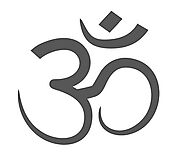
One would know this sign from the Om chant that you hear at the beginning or the end of certain yoga classes. With a little hat on top, it looks a bit like the number 30. It is made up of the sounds of the letters A-U-M, Om is for threes.
The Om sign, with its origins in Hinduism, is said to signify the oneness of all life, including the heavens, the earth, and the underworld. Others claim this is a reflection of the three Hindu gods, Brahma, Vishnu, and Shiva.
Some claim the symbol's actual form reflects the word's syllables: the 'three' is the 'aahh' Sanskrit letter, the small 's' is the 'oooh' and the 'mmm' sound is the half moon at the end. Om is considered one of the most powerful mantras, and for thousands of years, the practice of chanting Om has been performed.
There is a very special meaning to each part of the Om symbol:
The dot at the top reflects the Absolute State or the 4th state of consciousness. This state of consciousness is where you communicate and feel utter serenity and tranquilly with the divine. The ultimate purpose of spiritual awakening is the 4th level.
The shape of the crescent immediately below the dot is an illusion. This part reflects everything that falls in the way of you and the utter state. There are two curves to the left.
The bottom is the waking state, and the top is the unconscious state. The waking state curve is the largest curve since it is the most known state of consciousness. This is where we perceive things in the world of the five senses.
Above the waking state is the unconscious state, also known as the state of deep sleep. Only when everything subconsciously ceases, including dreams, do we enter this state of sleep.
There is one more curve between these two curves, which implies the dream state. The state of the dream is just as it sounds like. This is what we have seen before deep sleep, and it reflects our dreams.

It looks like a water Lilly. The water lily, or lotus flower, has a variety of symbolism and history. The lotus flower blossoms on the surface of the water, with its roots deep in the mud a sign of light and the appearance of darkness.
In Buddhism, the lotus blossom reflects the opening of the heart. Buddhists associate the opening of the lotus flower petals with the unfolding of what is sacred inside you. It is a perfect expression of fresh starts, of purity and of enlightenment. A closed flower is the heart with its infinite capacity for enlightenment, waiting to unfold.
In Hindu culture, the Lotus specifically represents beauty – particularly that of the eyes of women, fertility, wealth, spirituality and eternity.
The Lotus is used by the Buddhist community to signify purity, spiritual awakening and faithfulness. Buddhists, especially in paintings and other works of art, put sense into the color of the flower.
A blue lotus is indicative of common sense and wisdom.
A white lotus represents purity
A purple lotus reflects mysticism and Buddhism's 8-fold direction
A pink lotus is Buddha's "true" lotus,
The heart is signified by the red lotus.
Egyptian culture places a great deal of emphasis on life after death, and the lotus is quite symbolic of this. Throughout Egyptian culture, the lotus represented rebirth and resurrection. The Egyptians discovered that the flower disappears at night, only to reappear the next day—unstained. They connected this with the rising and setting of the sun, as well as life and death.
The Lotus is very significant to many cultures and religions. It is a beautiful and ideal reflection of our spiritual journey from darkness to light.
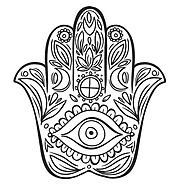
This yoga symbol appears as the palm of a hand, and in many cultures and religions, the hamsa is a common symbol. These cultures assume that the symbol (pictured by a right hand with an open palm or a hand with two open thumbs) is a sign of security.
The term "hamsa" is derived from the five fingers of the hand. It is also adorned with the "evil eye" that is thought to avoid any damage or threat. The hamsa is intended to be displayed or worn with fingers facing down to provide proper protection, and to bring good luck and power.
In Jewish culture, the Hamsa is highly symbolic of number 5. The five fingers represent the five books in the Torah, and the five types of sacrifices and offerings in the Torah, which consist of burnt, sin, trespass, grain, and peace. There are also five elements of the human soul, physical, emotional, intellectual, spiritual, and God.
In Buddhism and Hinduism, the five fingers are indicative of the chakras and the five natural elements.
The pinky finger is the sacred chakra and the water element.
The thumb represents the solar plexus and the element of fire.
The middle finger is a symbol of the chakra of the throat and the celestial elements.
The forefinger signifies the air part of the heart chakra.
The ring finger is a symbol of the root chakra and the element of the earth.

Loosely translated as "circle," the mandala is said to represent the universe. The mandala is structured to have a visual balance of elements that symbolize harmony and unity. When used in spiritual practise, the mandala is said to allow the mind to be involved in meditation.
As one might have observed, mandala can come in a multitude of styles, patterns and colours. If you look closely, you can see the mandala reflected in so many facets of your own life – the concentric loops in the patterns of nature, and even the circles of life, friends and family.
Every mandalas are physically pleasing and attractive. Colors used in mandalas serve a function as well.
Red = Power
Pink = love and femininity
Orange = imagination, transformation, self-consciousness, intuition.
Yellow = learning, wisdom, laughter and happiness.
Green = physical healing, physical capacity, nature love.
Blue = mental recovery, internal harmony, meditation.
Purple = something that is sacred
Black = mystery, deep thought, uniqueness
Mandalas reflects the wholeness, the peace and the harmony. They should always be symmetric with a radial balance. They should also always be intriguing and draw an individual into them, particularly by using numerous and vibrant colours.

Buddha is a Sanskrit word meaning "the awakened one." It reflects the life of the Indian prince Siddhartha, who gave up his throne, wealth, and lavish lifestyle to seek true meaning and happiness in life.
He studied with the religious prophets for years and went on a six-year journey to share what he believed was the way to find true peace and fulfilment in life. The teaching is known as the Dharma. Buddha is depicted in many different ways, including those that symbolize security, serenity or meditation, medicine and teaching.
The characteristic of the Buddha are:
Limitless compassion
Absolutely impartial
Non-judgmental and non-discriminatory
Loves all living creatures
Wisdom and power;
Does charity
High morals and self-control
Very frank and generous
Patience
No anger and non-violent
For many people, the Buddha is an important emblem. It can remind one, the three Buddhism tenants that are not to be ignorant, not to hate others, and not to be furious. Buddha may also remind to exercise moderation. The last words to his followers were "All the things that make up the universe are changeable. They're not viable. Work hard to achieve salvation on your own."
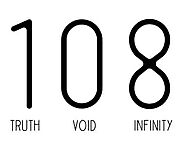
The number 108 holds certain type of holy meaning in several religions around the world, past and present. The number reflects wholeness, completeness of spirit and represents the foundation of all life. In yogic traditions, the number 108 is also significant and comes up in nature, science, and ancient architecture. There are also examples of the showing up of "108."
The size between the Earth and the Moon is 108 times that of the Moon.
In India, there are 108 holy places
There are 108 points of pressure in the human body
108 energy lines that come together to make up the heart chakra.
We have 108 different forms of emotions, 36 in the past, 36 in the present and 36 in the future.
108 is the number of beads used when making malas, garland or prayer beads.
Stonehenge has a diameter of 108 feet
The High Temple of Lamanai, Belize, is 108 feet tall.
The Temple of Tikal in Guatemala is also 108 feet tall.
The Hindu religion has 108 separate god names.
There are 108 virtues of Jainism.
108 is known as the Harshad Number which means that it is divisible by the sum of its numbers 1+0+8=9 and 108 is divisible by 9 and in Sanskrit "harshad" means "joy"
There are 54 letters in Sanskrit and each letter has two forms: male and female, and 54×2=108.
There are 108 meditation forms and 108 paths to Lord.
There are 108 Holy Books of Tibet
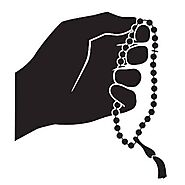
Mala Beads, much like the Rosary, are used during meditation. In Sanskrit, the word "mala" literally translates into the meditation garland. Malas usually have 108 beads and one Guru Bead. The Guru bead is always larger than the rest of the bead and is a spiritual guide. It is often used as a place-maker for the beginning and the end of your meditation. It may mean a connection between a spiritual guide and a student of theirs.
During meditation, the rest of the beads help you keep track of how many times you say a mantra or a prayer. Every time you repeat the mantra, you shift your hand to the next bead. Sometimes the malas also include a tassel, and they represent a link between you and God, as well as between you and others. Malas can be made of several different materials and colors of beads, each of which has different meanings.
Red Jasper - Grounding, organization, imagination, compassion, rejuvenation, mental awareness and concentration.
Red Tiger Eye – Inspiration, defense, vision, modesty, trust. I
Garnet – Cleaning and energizing, self-confidence.
Rose Quartz – Reality, peace, unqualified love.
Rhodonite – stability and healing
Unakite - Grounding and balancing.
Carnelian – imagination, inspiration, vitality, bravery, courage.
Amber – regeneration, cleaning, strength, relief from tension, emotional healing.
Goldstone – It produces energy and security.
Citrine, energy and prosperity.
Yellow Malay Jade – wisdom, moderation, and viewpoint.
Honey Calcite-energy, vitality, courage, power and persistence.
Green Aventurine – Compassion, empathy, perseverance, success, determination.
Moss Agate: self - esteem, personal development, motivation, optimism
Green Jade – soothing and calming.
Malachite – Imagination, faith, emotional balance.
Blue Aventurine - communication and imagination
Blue Tiger Eye – stress relief, inspiration, defence, vision, modesty and faith.
Indian Bloodstone - Healing, detoxifying, revitalising.
Lapis Lazuli – the inner reality, self-awareness self-expression.
Blue Sky Jasper - Protection
Amethyst – Enhancer of memory, motivator, tranquillizer. Protective, Equilibrating.
Crazy Lace Agate – Calm, self-acceptance and self-confidence, concentration and attention.
Sugilite - Protects and prevents negative attachments.
Smoky Quartz – Relieves tension and encourages serenity and strength
Black Agarwood Eaglewood – Invigorates, purifies, soothes.
Obsidian – clarity, stability, wisdom, compassion, and power.
Black Onyx - Protection, vitality, good fortune, vigour and fitness.
White Howlite - memory, patience, calm, optimistic.
Mother of Pearl – healing, security, imagination.
Simple Quartz – recovery, washing
Pearl - Grace, innocence, honesty, happiness, love, and dignity.
Bodhi Seed- Awakening, Spiritual promise, loyalty, confidence.
Bayong Wood – peace, moral stability
Tiger Eye- Protection and grounding, trust,
Brown Agate – internal stability, self-confidence, composure and maturity, focus, vision.
Tulsi – washing, offers security.
Rosewood- Protection
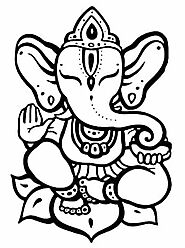
Ganesh is a Hindu deity who is often portrayed with the head of an elephant and is aligned with the first chakra. It is known as the Lord of Good Fortune and the Lord of Beginnings. It brings wealth, fortune and achievement by eliminating both spiritual and material barriers. The various parts of Ganesh also have symbolic significance.
His big elephant's head is a symbol of knowledge and intelligence, reminding us to "think big"
His tiny eyes remind us to reflect on and enjoy the little things of life.
Ganesh's little mouth reminds us to speak less and to enjoy silence.
His big ears are asking us to listen more
The trunk is built to symbolize flexibility and adaptability.
Generally, Ganesh is represented with only one tusk, and this is to remind us to remember the positive and forget the bad.
Ganesh can also give wisdom and details.

Usually heard at the beginning and/or end of a yoga or meditation class, Namaste translates to the 'light in me honors and recognizes the light in you.' The term 'light' means soul or the divine.
Read more about Yoga
